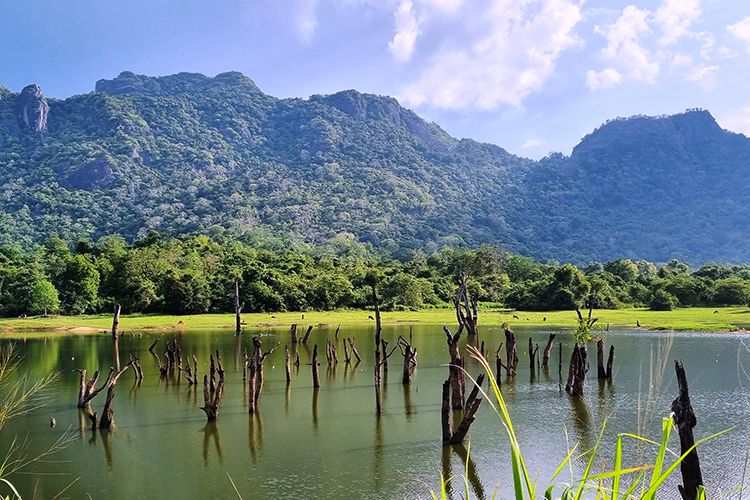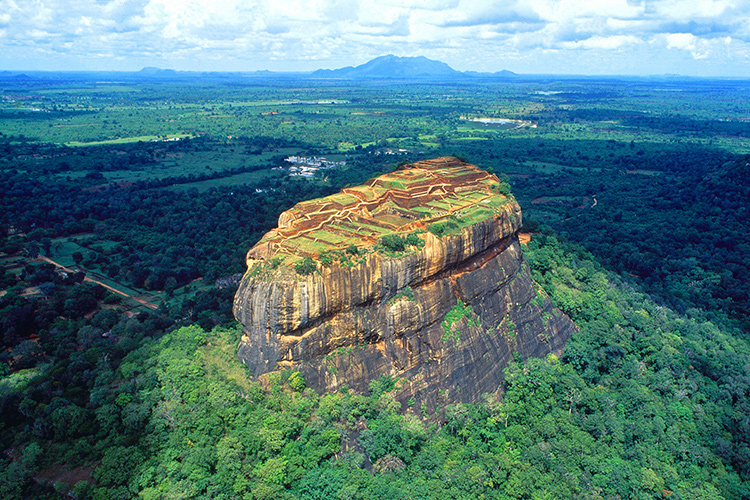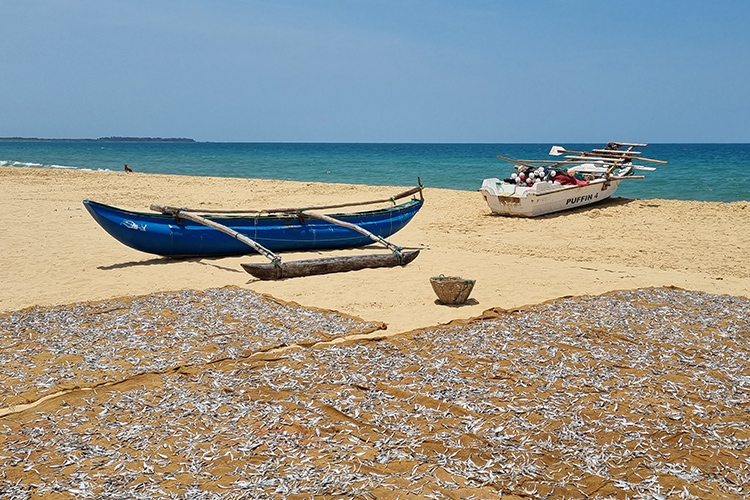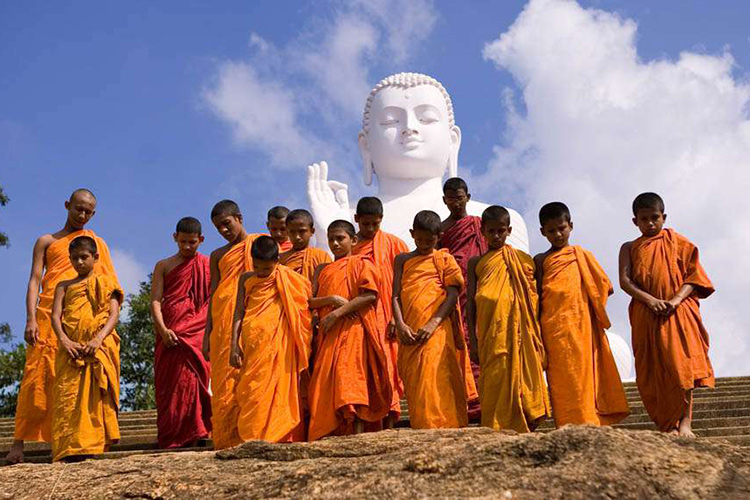Sublime Sri Lanka
Sri Lanka – The Teardrop Isle; Serendib; The Pearl of the Indian Ocean - is officially known as the Democratic Socialist Republic of Sri Lanka, and is an outrageously beautiful island nation situated in the Indian Ocean, southeast of the Indian subcontinent. With a land area of approximately 65,610 sq. km, Sri Lanka is a relatively small country but one that boasts a diverse and captivating geography, culture and history. So beautiful is it that it has been fought over and freed from many foreign powers wanting to take ownership of it over the centuries – but today it is a country at peace. Having been through a brutal 26-year civil war (ending in 2009) and having suffered terribly through its recent financial crisis, Sri Lanka today is on the mend and on the up, tourism is booming, and being so small and with such good infrastructure, there’s no better place to go for a hugely varied holiday.

For such a small island there is a wide variety of ethnic groups and religions. The predominant are the Sinhalese with Sri Lankan Tamils, Muslims and Indian Tamils making up the rest as well as Veddah’s and Burghers. Some communities live in their own ethnic group but many have branched out and live all over the country, happily next to each other. Similarly, diverse are the religions to be found - Buddhism is followed by 70% with Hinduism, Islam and Christianity making up the rest – religions sit happily side by side here. The country boasts a very high literacy rate with its people being well clued up, engaging and taking a keen interest in world events.
They are also a hugely welcoming, genuinely friendly people who are passionately proud of their culture and history and take great pleasure in revealing it to friends and visiting guests. As a result, travelling around this small island is always a joy as there’s a smiling face on arrival at every destination and help is always readily forthcoming.
The island is dominated by a central mountain range running north to south, which is surrounded by a coastal plain on all sides. The highest point in Sri Lanka is Pidurutalagala (2,524M) and the views from here are exceptional. The central highlands feature deeply wooded green hills, dripping jungles, tea plantations, and cascading waterfalls, creating breath-taking landscapes. The region is also home to the Knuckles Mountain Range, a UNESCO World Heritage site, known for its exceptional biodiversity and scenic beauty. The walking in these hills is superb.
Surrounding the central highlands, to the north they tail off to dry, arid plains; to the south, east and west they give way to low-lying hills replete with fabulous wildlife reserves which, in turn, give way to the stunning coastal plains. These exceptional plains extend along the entire coastline, offering pristine sandy beaches and colourful fishing villages. The western and southern coasts are renowned for their stunning beach hotels, great surfing, whale watching and walking. The east coast, on the other hand, is known for its natural, wild beauty, with less commercialization and a more laid-back atmosphere but has recently had some wonderful new hotel openings which provide a whole new area to visit in comfort and help link up wonderful new routes around the country.

Sri Lanka's geography also includes several major rivers and water bodies – many of them historic and dating back to the 5th BC when Vijaya first created reservoirs and hydraulic engineering allowed him to cultivate the island’s dry, northern plains. The Mahaweli River, the longest river in the country, plays a vital role in irrigation and hydroelectric power generation; and the country's many beautiful lakes and reservoirs, such as the Kandy Lake and Victoria Reservoir, contribute to water supply and support agricultural activities as well as sustaining a multitude of flora and fauna.
When it comes to climate, Sri Lanka experiences a tropical monsoon climate, influenced by both the southwest and northeast monsoons. The country has two distinct monsoon seasons, resulting in two primary climatic zones. The southwest monsoon, which occurs from May to September, brings heavy rainfall to the south-western and central regions. The northeast monsoon, prevailing from December to February, affects the northern and eastern parts of the island, resulting in increased precipitation but on a lesser scale. It is warm and humid here throughout the year with the coastal areas remaining pretty constant (approx. 26°C to 32°C) but the temperature drops more dramatically in the central highlands (approx.15°C to 25°C) and they are also prone to mist and fog! The beauty of having 2 monsoons means that there is somewhere perfect to visit on this island in almost any month of the year – there are not many places in the subcontinent that are ideal to visit in August, for example.

Sri Lankan cuisine is a delectable fusion of tastes, spices, and textures that reflects the island's rich cultural heritage and influences from various regions. Known for its aromatic spices and bold flavours, Sri Lankan food offers a diverse range of dishes that cater to different tastes and preferences. Rice and curry are considered the staple dish and typically consists of steamed rice accompanied by an array of curries, including meat, fish, or vegetable options, all bursting with vibrant flavour and often made with coconut milk, lending a creamy richness to the dishes. Chilli and other fiery spices play a crucial role in Sri Lankan cooking, with favourites like cinnamon, cardamom, cloves, and curry leaves adding depth and complexity to the flavours.
Hoppers, a traditional Sri Lankan breakfast food, are thin, bowl-shaped pancakes made from fermented rice flour. These crispy yet soft hoppers can be enjoyed plain or with various accompaniments such as coconut sambal or curries. Other popular Sri Lankan dishes include string hoppers (steamed rice noodles), kottu roti (chopped flatbread stir-fried with vegetables and meat), and lamprais (rice and meat wrapped in a banana leaf and baked). For those with a sweet tooth, Sri Lankan desserts offer a delightful array of treats. Watalappan, a rich custard made with coconut milk and jaggery (palm sugar), and kiribath, a coconut-infused rice pudding, are among the favorites. Whether you're a fan of spicy curries, aromatic rice dishes, or crave a unique culinary experience, Sri Lankan food is sure to tantalize your taste buds and leave you wanting more.
Sri Lanka's diverse geography, culture, cuisine, history and climate really do make this a wonderful island to explore. For history lovers it is replete with deeply fascinating ancient sites in the central north around Anuradhapura, Sigirya and Polonnaruwa; the ancient Sinhalese highland capital of Kandy; and a plethora of historic coastal fort towns created by the Portuguese, Dutch and British, all scattered around the coast. For nature lovers the country is home to a wide array of flora and fauna, including endemic species found nowhere else in the world. Sri Lanka's national parks, such as Yala, Minneryia, Udawalawe, Gal Oya, Bundala and Sinharaja, offer opportunities to go out on foot, by boat or by jeep to explore this incredible biodiversity up close and to see huge herds of elephant, leopards, lazy crocodiles sunning themselves, along with a host of bird species and other animals. For beach lovers there is perhaps nowhere better. With its miles of coastline there are exceptional beaches of all types – golden sands, swaying palm trees, calm seas or surf seas, buzzy or remote – the world is your oyster!

Sri Lanka is a veritable treat, a captivating island, easy to explore and above all, welcoming beyond words!
